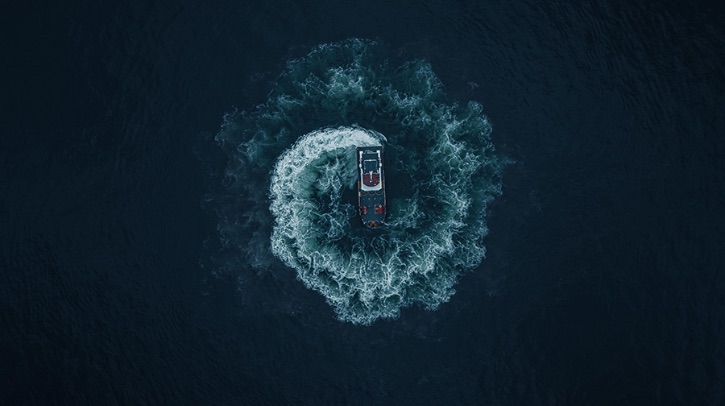Northern Offshore Services (N-O-S) has unveiled its new I-Class crew transfer vessel (CTV) powered by the first real-world commercial application of Volvo Penta’s IPS Professional Platform.
I-Class crew transfer vessel
The vessel began operating in a UK wind farm on September 1, 2024. Volvo Penta’s IPS Professional Platform is said to bring enhanced efficiency, maneuverability and versatility that will enable the I-Class vessel to evolve over its lifecycle. This is made possible through propulsion conversions that enable the vessel to adapt to hybrid, fully electric and renewable or future alternative fuel solutions without having to rebuild. The I-Class vessel is also equipped with a remote diagnostics package, which will capture more than 6,000 hours of data that will be incorporated into optimization and future Volvo Penta propulsion design.
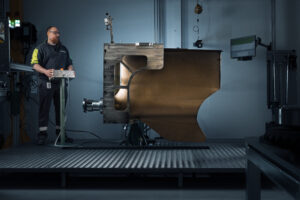
The I-Class vessel also leverages four engines connected to two drives to meet specific needs at every stage of operation, providing dual power on demand. The Volvo Penta IPS Professional Platform’s smart Eco Mode automatically manages and optimizes engine use based on real-time needs during vessel operation. Eco Mode will automatically start or stop individual engines in each situation, optimizing fuel consumption and engine running hours. 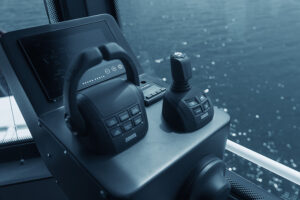
The Volvo Penta IPS Professional Platform has an internal combustion engine (ICE) solution available to leverage alternative or renewable fuel sources. Equipped I-Class vessel engines could potentially see up to 30% total fuel savings and emissions through the Eco Mode feature. These engines are approved to run hydrotreated vegetable oil (HVO) and have the potential to reduce emissions by up to 90%.
Designed with accessibility in mind, the I-Class vessel is intended to be easy to operate and maintain with the Volvo Penta IPS Professional Platform. As a fully integrated helm-to-propeller system, the controls, electronics, in-house developed software, propulsion package and more are all designed to seamlessly work together, enabling operators and crew to focus on the operation at hand.
Sustainability goals
N-O-S and Volvo Penta collaborated for almost two decades on ongoing efforts to decarbonize the marine industry and reach zero emissions by 2050. To help achieve these goals, N-O-S designed the flexible, futureproof CTV to adapt to and accommodate new technologies and energy solutions while it is in service over the next 25 years and more. 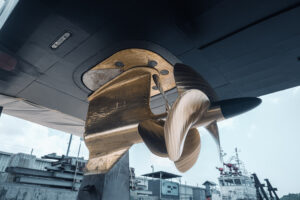
“Northern Offshore Services and Volvo Penta share an innovative spirit that drives us both. Today that resulted in the first vessel powered by Volvo Penta’s IPS Professional Platform entering real-world commercial operations,” said Johan Inden, president of Volvo Penta Marine.
“N-O-S’s deep experience in building vessels for some of the most demanding environments challenged us to develop new ways to improve our propulsion systems and adapt to emerging technologies. Together, we are showing the industry what the incredible maneuverability, ease of use and precision of the Volvo Penta IPS Professional Platform can accomplish in combination with the expertise of a partner like N-O-S.”
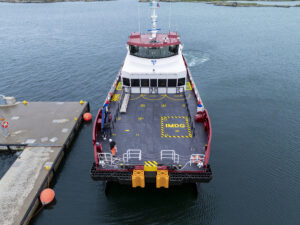
“The offshore wind industry is relatively young and has grown tremendously during the last 15 years. The trend we see is that the turbines are getting bigger and are placed further out at sea, and due to that, downtime of the turbines cost more so our customers want more reliable services and vessels. We also work a lot with the work environment on board, so that our employees have a modern and safe workplace,” said David Kristensson, group CEO and owner of Northern Offshore Group. “These are just some of the challenges that are catalyzing innovation and driving the design and manufacture of our vessels in-house to meet the customer demands of tomorrow.”
In addition to the Volvo Penta IPS Professional Platform’s flexibility to adapt to future technologies and energy solutions, it is also designed for maneuverability. The enhanced maneuverability and thrust from the system make it ideal for the challenging conditions typically seen at offshore wind farms. Twin forward-facing counter-rotating propellers push water directly backward, creating a powerful thrust while reducing torque to enable more precise control over the I-Class vessel. By combining the omnidirectional propulsion system and the N-O-S High Grip Fender with the experience of the crew, operators can fully take advantage of the I-Class vessel to make safe journeys to wind farms further away, and safely offload and onboard technicians in any sea condition.
Volvo Penta and N-O-S plan to continue to collaborate to make the experience at sea more comfortable, productive, efficient and easier, while a second I-Class vessel equipped with the Volvo Penta IPS Professional Platform, will see real-world operation in early 2025.
In related news, Volvo Penta recently created the world’s first retrofitted electric crew transfer vessel. Click here to read the full story.


